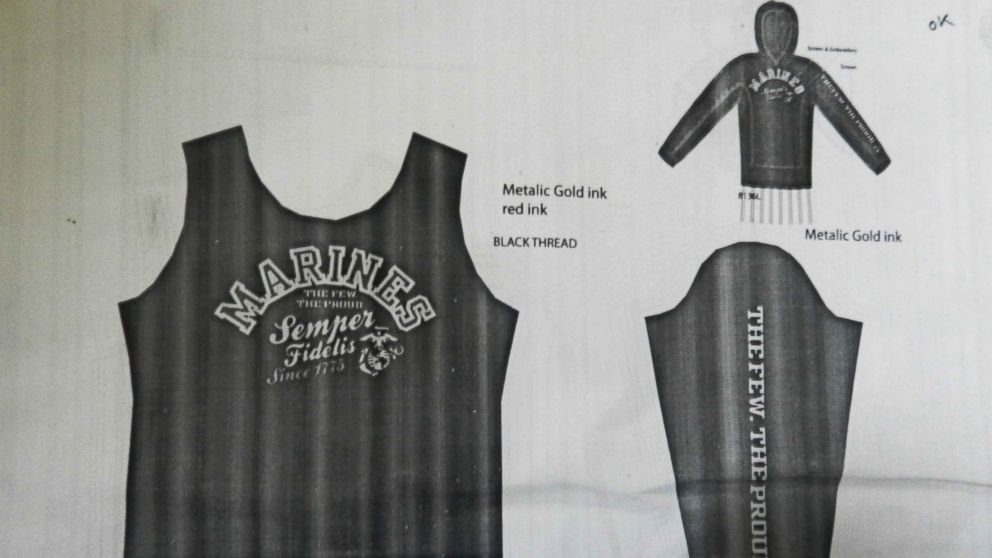Dangerous Third-World Factories Made US Military-Logo Clothes, Report Says
Inspections run on a sham system and a marine corps insignia is found in a fire

Feb. 12, 2014 — -- U.S. military exchanges that sell clothing to service members and their families are essentially "flying blind" when it comes to the sometimes deadly conditions in the third-world garment factories where military-logo clothing is made, an international labor group says in a new report.
The retailers, which operate more than 1,100 stores on U.S. bases, are "sourcing their private-label clothing from factories in Bangladesh without taking any independent action to investigate or remedy safety hazards and illegal conditions," according to a report by the International Labor Rights Forum (ILRF) provided to ABC News.
The report comes just over one year after ABC News reported that activists in Bangladesh found order forms and design specs for sweatshirts and tank tops emblazoned with U.S. Marine Corps insignia and logos inside the smoldering wreckage of the Tazreen Fashions factory where more than 112 workers died in a fire.
The deadly fire was one in a series of factory catastrophes in Bangladesh – fires and a building collapse that led to the deaths of more than 1,000 workers.
At the time, the labor group's spokeswoman, Liana Foxvog, said "the fact that Marines logo clothing was found in the rubble of the sweatshop fire should serve as a wake-up call to the U.S. Government to put into place safeguards to ensure decent working conditions in government supply chains and among licensees."
The Marine Corps trademark and licensing office responded by requiring its licensees to either join in international accord on factory safety or abide by its requirements. But the military exchanges have not followed suit, according to the 50-page report by the ILRF, which looked at exchanges used by each military branch to sell clothes like sweatshirts and jerseys, and the conditions of the factories where they ordered clothing.
The report says the exchanges have relied either on the factory inspections conducted by other large retailers, or allowed the factory to "self report" on their conditions. As a result, the group found examples of military-logo clothing being made in a factory with a "D" grade for safety, in a factory where one wall had a five-story-long rupture, in a factory with missing fire extinguishers and in another with locked bars over the doors and windows.
"The US government has an obligation to make sure that workers are not endangered and abused," said U.S. Rep. George Miller, a California Democrat who is the ranking member of the House committee that handles labor rights issues.
"They don't vet the [supply] system," Miller told ABC News. "They rely on the brands. It's a sham system. Even where that system points out serious problems, there is no evidence that the exchange takes serious action."
Bryan Driver, who oversees the policy and public affairs branch of the Semper Fit and Exchange Services Division, one of several exchanges tracked in the report, said he would wait to see the ILRF report before offering a comment. In the report, officials with other military exchanges argued that relying on audits performed by retailers was sufficient to vet the conditions in garment factories overseas. And they said they have canceled contracts with factories that were subpar.
Gregg Cox, who oversees the Washington office of the Army and Air Force Exchange Service, is quoted in the report saying when there are indications of poor conditions, "we rely on an auditor's report to determine if the factory has taken improvement actions and evaluate the follow-on report."
Björn Skorpen Claeson, the ILRF official who served as principle author of the report, said his organization did not consider that sufficient.
"As large buyers, agents of the U.S. government, and emissaries of American values, the U.S. military exchanges have an obligation and an opportunity to define a new standard for social responsibility in their supply chains," he wrote.



